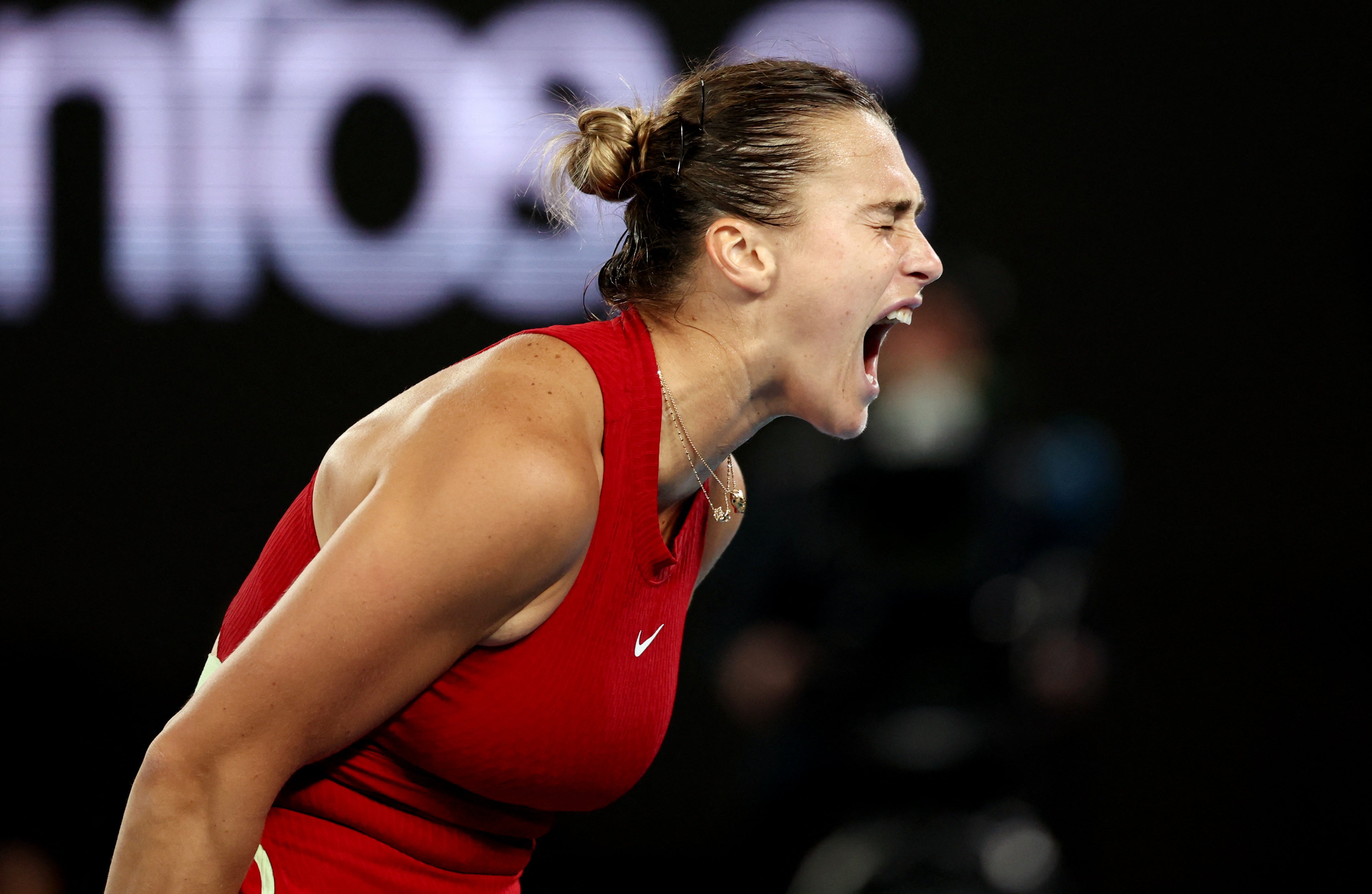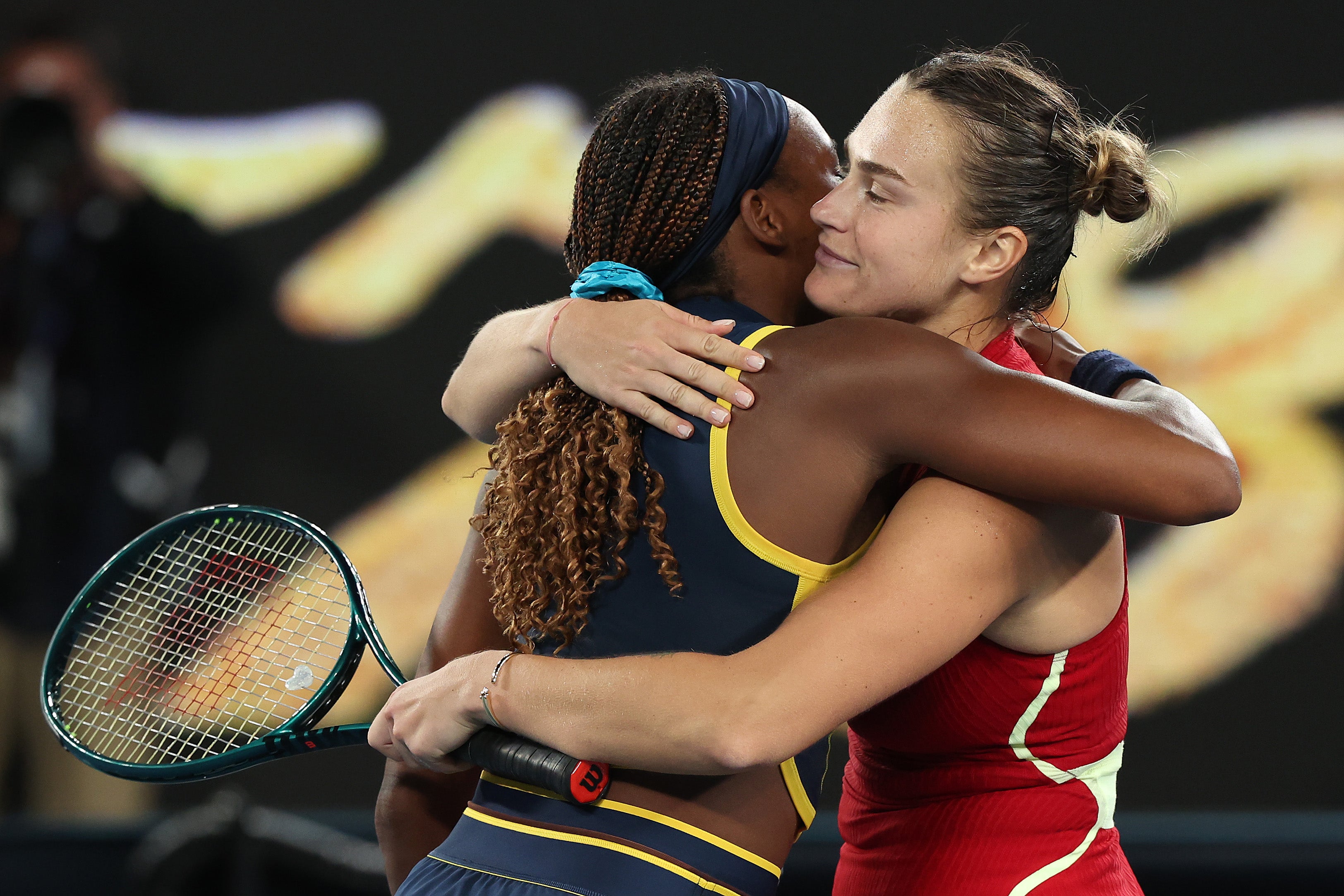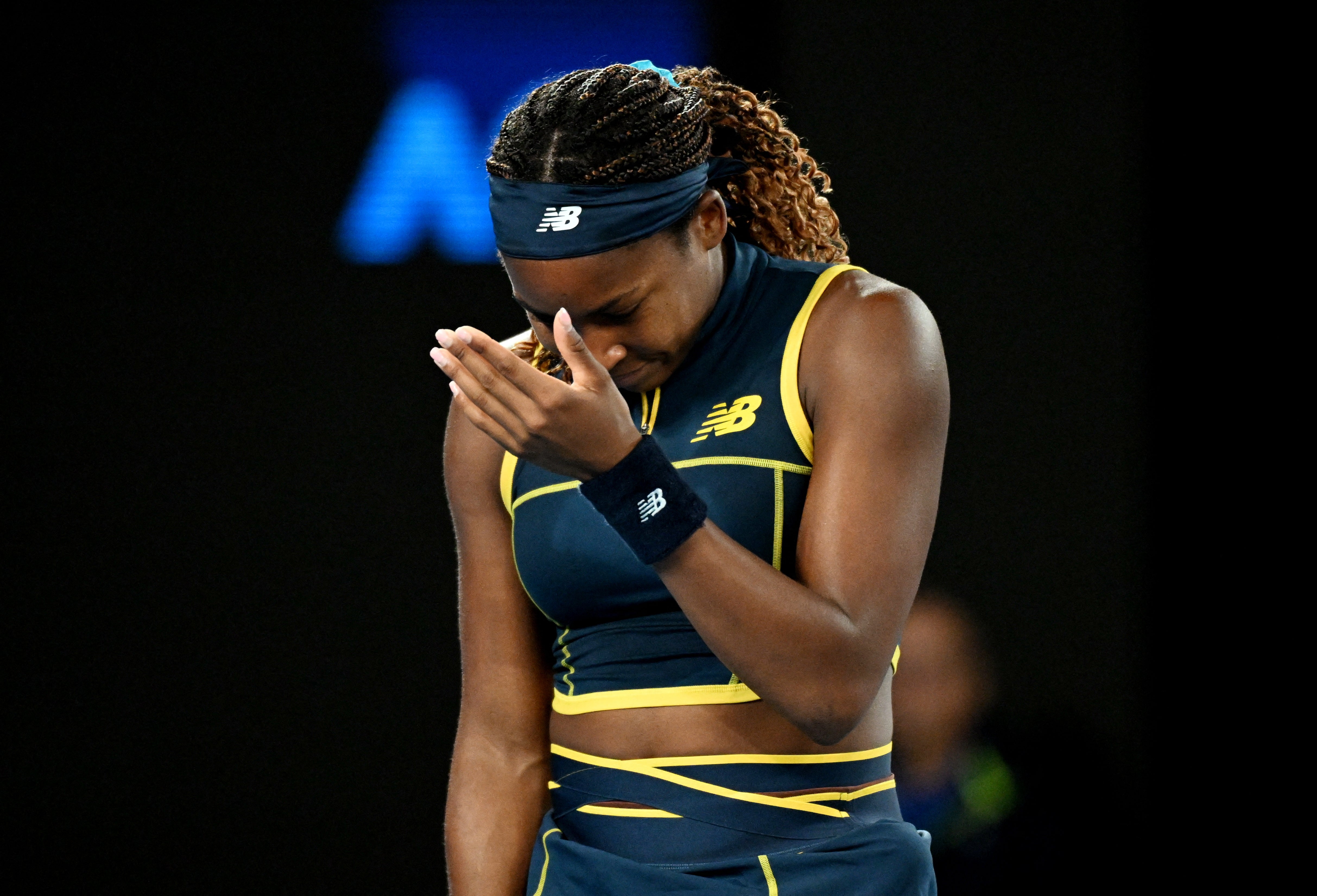Aryna Sabalenka overcomes Coco Gauff and her demons to reach Australian Open final
The defending champion regained her composure at the end of the first set as she defeated Gauff 7-6 6-4 and returned to the Australian Open final, where she will play Qinwen Zheng

Your support helps us to tell the story
From reproductive rights to climate change to Big Tech, The Independent is on the ground when the story is developing. Whether it's investigating the financials of Elon Musk's pro-Trump PAC or producing our latest documentary, 'The A Word', which shines a light on the American women fighting for reproductive rights, we know how important it is to parse out the facts from the messaging.
At such a critical moment in US history, we need reporters on the ground. Your donation allows us to keep sending journalists to speak to both sides of the story.
The Independent is trusted by Americans across the entire political spectrum. And unlike many other quality news outlets, we choose not to lock Americans out of our reporting and analysis with paywalls. We believe quality journalism should be available to everyone, paid for by those who can afford it.
Your support makes all the difference.There was a sense of history repeating itself as Coco Gauff halted Aryna Sabalenka’s relentless attacking play and broke level in their Australian Open semi-final. After surviving the early onslaught from Sabalenka’s forehand wing, Gauff turned the reigning champion against herself: stretching her defences wide to crack a glimpse at Sabalenka’s vulnerabilities. But as Gauff served for the first set, Sabalenka’s response highlighted the immense improvements she has made in the mental aspects of her game in the past 12 months: she overcame Gauff as well as her demons in striking back to win 7-6 6-4 and return to the Australian Open final.
In the end, it was Sabalenka’s unrelenting power that triumphed over Gauff’s resilience in a heavyweight semi-final clash between two grand slam champions that lived up to its billing. But there were moments at the end of the first set that suggested the Gauff’s gameplan that proved so effective in coming from a set down to beat Sabalenka in September’s US Open final was going to work again. Sabalenka’s errors were beginning to mount as Gauff’s defensive wall stood strong on the baseline but the Belarusian regained her composure, steadied her game and attacked Gauff with the same clear and clinical intent that has fuelled her return to the Melbourne final.
She will be the overwhelming favourite when she takes on Qinwen Zheng on Saturday, as Sabalenka aims to become the first player to win back-to-back Australian Open titles since compatriot Victoria Azarenka in 2012 and 2013. Sabalenka will be strengthened, too, by passing her first real test of her first grand slam title defence. The second seed had breezed into her sixth grand slam semi-final in a row behind her powerful serve and attacking forehand, spending just five hours and 15 minutes on court in her five wins and without dropping more than three games in a set.
Sabalenka, though, had yet to play an opponent who could slow her down and force her to face awkward situations and pressure points. She has not had to “overthink” because it is almost as if she has been playing downhill and with the brakes off. Gauff, though, was always going to be difficult. The American’s lightning reactions and nimble movement means she is an excellent defender at the back of the court and in the US Open final she was able to frustrate Sabalenka by continuing to get an extra ball back in play, forcing her opponent to hesitate behind her forehand strike and gradually making her miss.

And in the opening set, that pattern was starting to unfold again: Sabalenka became flustered, tight and stressed, and Gauff sensed the change in mood. The US Open champion grew into the contest, salvaging those forehand blows from the corners and turning them into opportunities. Gauff saved set point after eventually finding her rhythm behind serve and dragging Sabalenka into longer rallies, forcing her opponent into a series of errors at the net.
The most glaring error came as Gauff’s surge continued to stand a game away from the opening set. As Gauff managed to stay alive in the latest tense exchange, Sabalenka pressed into the net but fired wide on a simple forehand to gift Gauff the break. Sabalenka howled and in that moment, her US Open final defeat and other past collapses in grand semi-finals, such as at Wimbledon and the French Open last season, could have been at the forefront of her mind.
But Sabalenka returned to her gameplan and ramped up the ferocity of her groundstrokes. Gauff’s second serve was exposed as a clear weakness as Sabalenka ruthlessly attacked balls that were rolled into the middle of the service box, crushing the returns. From 30-0 on Gauff’s serve, it led to the break. In the tiebreak, Sabalenka produced her best level of the match in a landslide decider. Gradually, Sabalenka understood that, against Gauff, she was going to be required to play that extra ball. She stopped rushing and from there, the second set was played on her terms.
It was telling that Gauff believed she had played better than in her US Open final victory. “I wish I could have made more first serves. I think that was the difference,” the American said. “She had a higher first-serve percentage, and it’s tough to also go for the second when you double-faulted a couple times. But I don’t think that wasn’t the fault, either. Because I put myself in the position, I cleaned up the first set, put myself in the position to serve out the set. At the end of the day, it came down to a couple of points. Same in the second.”

In those moments Sabalenka continued to attack and she believed it was the difference from her defeat in the US Open. “I think in New York I played a little bit passive,” Sabalenka explained. “I didn’t put so much pressure on her. I mean, I did in the first set, but then I kind of, like, slowed down and start just trying to play rallies with her, which is not working well. The whole preseason I was working on those approach shots, on coming to the net and finish the point on the net. I’m super happy that I was able to do that today.”
Sabalenka will now play in her third final out of the last five grand slams against the 12th seed Zheng, a first-time finalist. The difference could be experience. Sabalenka said she will not be going “crazy”, like in her first grand slam final against Elena Rybakina last year. “When you play first final you kind of like get emotional and rushing things sometimes,” she said. “When you’re like third time in the finals, you’re, like, okay, it’s a final, it’s okay. It’s just another match, and you’re able to separate yourself from that.”
From the chaos, Sabalenka has found ”focus” - now a second Australian Open title is within reach after passing her toughest test yet.
Watch every moment of the Australian Open live and exclusive on discovery+ and Eurosport
Join our commenting forum
Join thought-provoking conversations, follow other Independent readers and see their replies
Comments